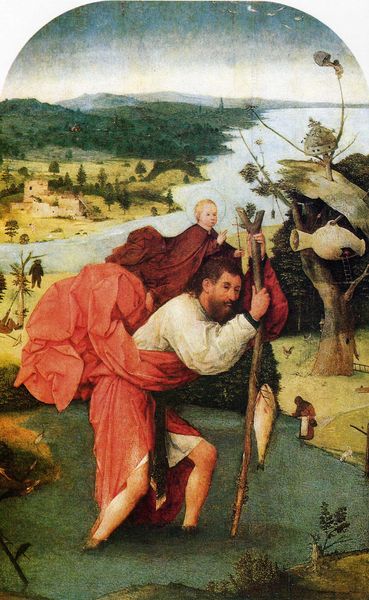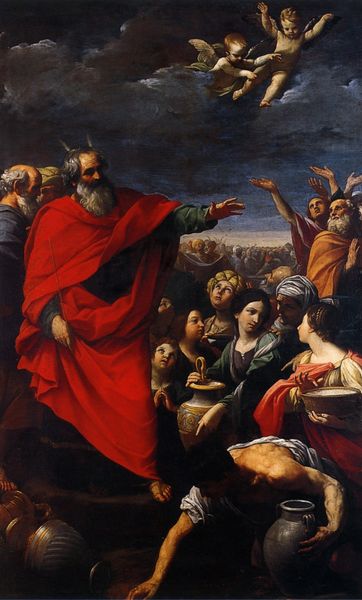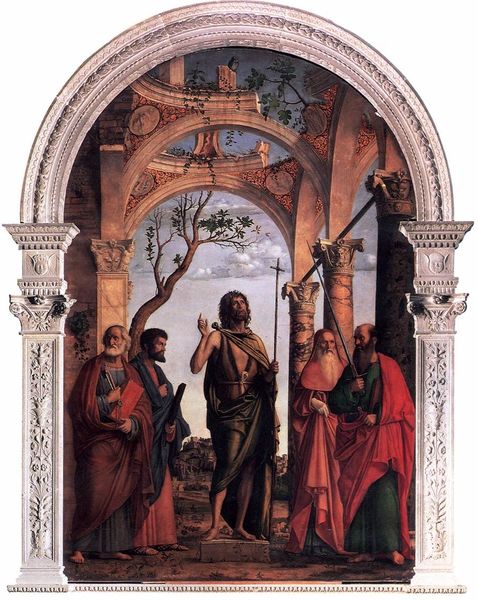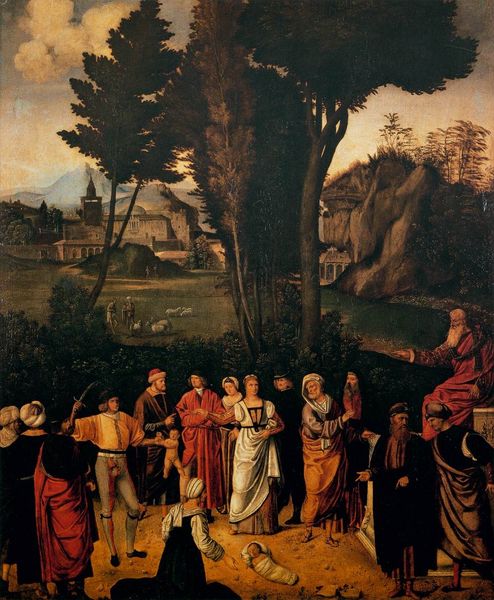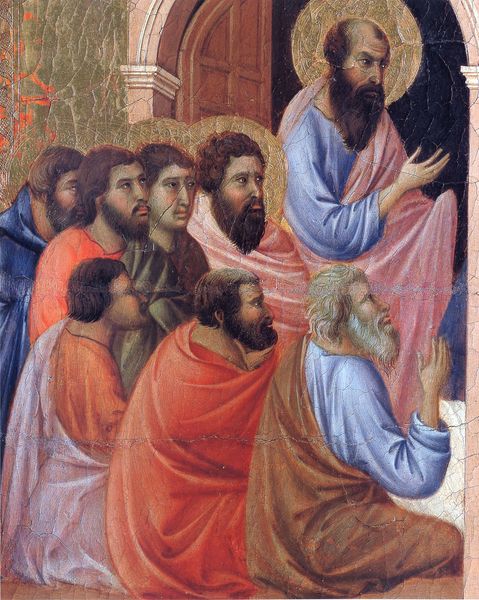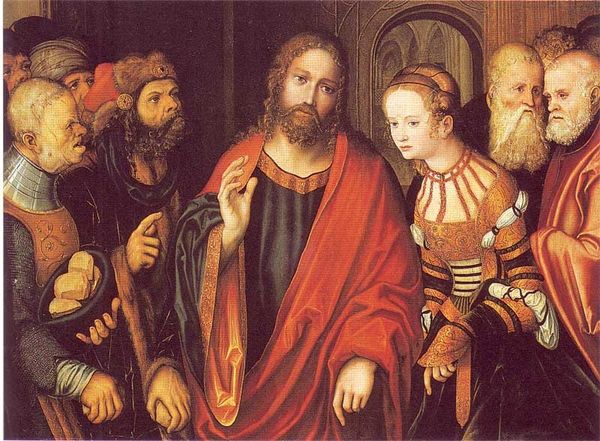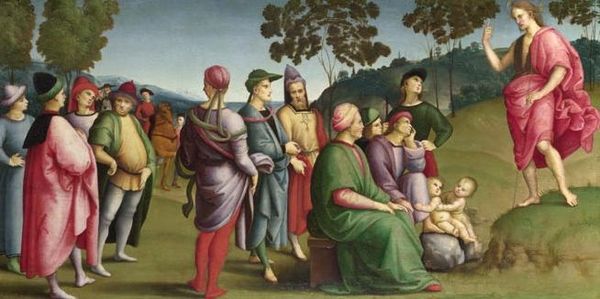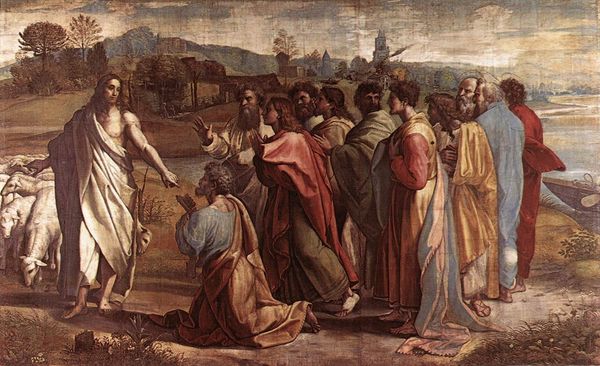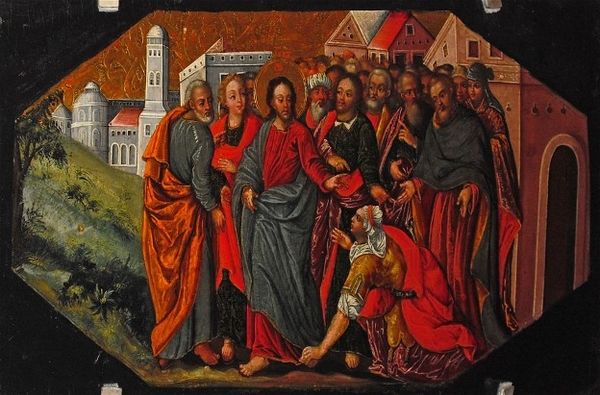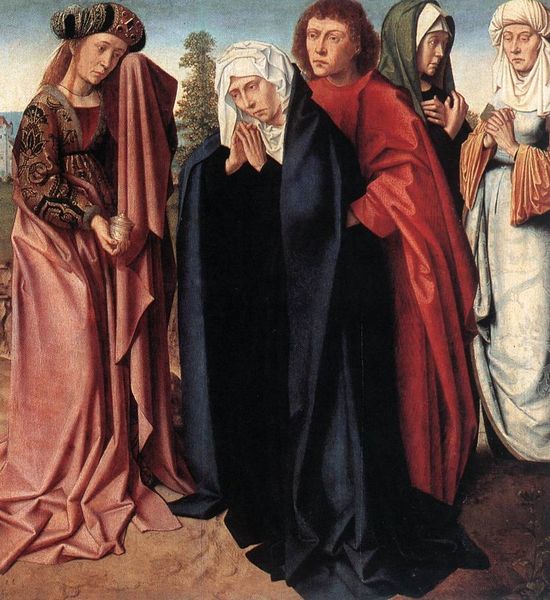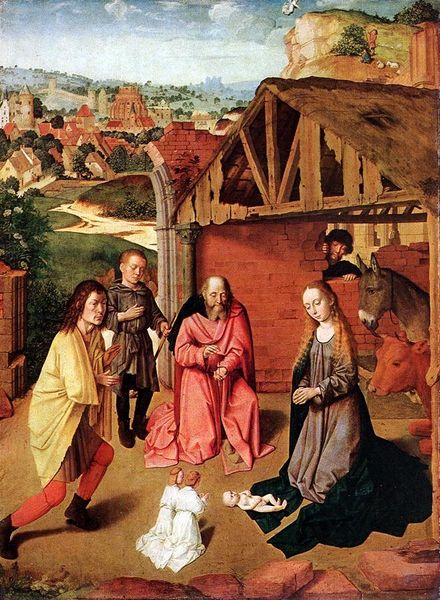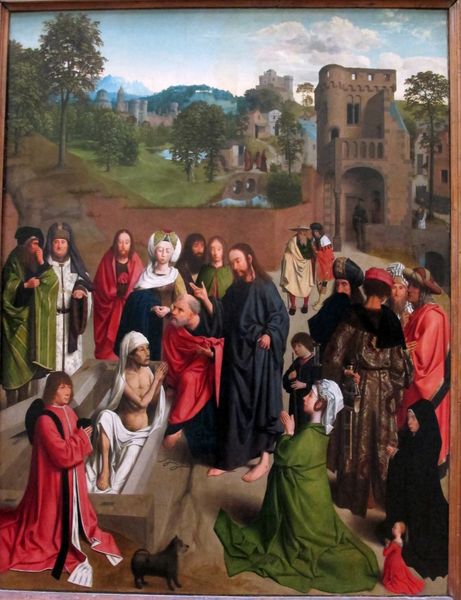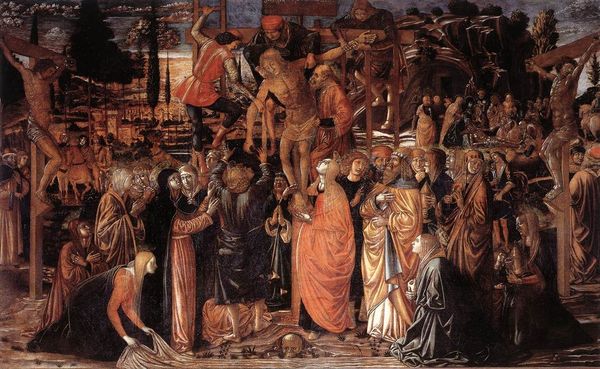
oil-paint
#
narrative-art
#
oil-paint
#
landscape
#
figuration
#
oil painting
#
northern-renaissance
#
early-renaissance
Copyright: Public domain
Curator: Here we have a detail from Jan van Eyck's monumental "Ghent Altarpiece," completed in 1432, now residing in St. Bavo Cathedral in Ghent, Belgium. Editor: Wow. My immediate impression is warmth. That intense, earthy red robe contrasted with the slightly melancholy faces... It feels like a story unfolding, doesn't it? A somber procession through a sun-drenched landscape. Curator: It’s intriguing you pick up on that interplay. The "Ghent Altarpiece" and this detail are laden with religious symbolism and sociopolitical weight. The Northern Renaissance style emphasized realism and detail, aligning with a burgeoning humanist movement that saw humanity itself as worthy of artistic study. Editor: Exactly! That intense realism makes these figures feel so present. Like, you can almost hear the rustle of their clothes. It grounds the ethereal in something tangible. Are we seeing idealized portraits here, or something more grounded? Curator: The details—the textures, the varied expressions—suggest a shift away from strict idealization toward individualized representation. These figures feel distinctly human. Their very real-looking feet even walk barefoot. It marked a profound change in the understanding of the purpose of figurative representation in the early 15th century. Editor: But that makes it all the more powerful. I love how van Eyck's oil paint makes it feel timeless, as fresh today as it must have seemed centuries ago. Did that feel groundbreaking to its original audiences? Curator: It would have been transformative! This artwork was commissioned for the city's namesake Cathedral. Van Eyck presents us with not only the religious figures one might expect in that context, but almost every class, age, and identifiable person is here represented, speaking to Ghent's rise in the tapestry of the North during this early Renaissance era. Editor: It definitely leaves you pondering human nature. In what felt so deeply rooted in a time and a place, the overall effect reminds me how the search for peace and redemption spans across cultures. Curator: That feeling, I think, encapsulates what makes it so compelling. To see these specific individuals standing in this particularly crafted nature provides an unending window on human history.
Comments
No comments
Be the first to comment and join the conversation on the ultimate creative platform.
